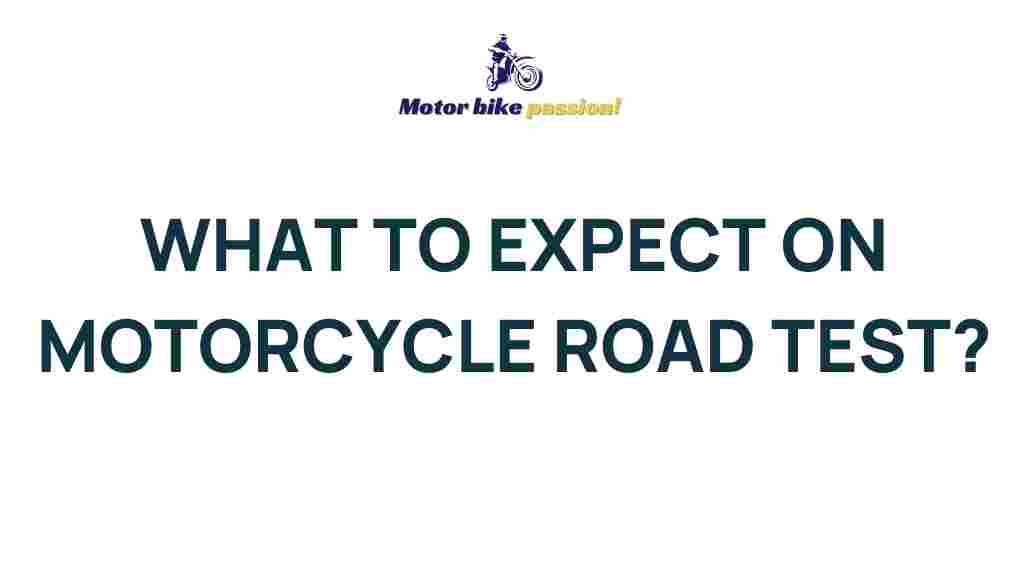Uncover the Secrets of Mastering Your Motorcycle Road Test
Preparing for your motorcycle road test can be both exciting and nerve-wracking. Successfully passing this test not only allows you to ride legally but also ensures that you possess the necessary skills to ride safely on the road. In this article, we will explore essential tips, tricks, and techniques to help you prepare adequately and increase your chances of success. Whether you are a novice rider or seeking to brush up on your skills, this guide is designed to equip you with the knowledge you need to ace your motorcycle road test.
Understanding the Motorcycle Road Test
The motorcycle road test is a practical examination that assesses your riding skills and your ability to handle various road conditions. Different states may have specific requirements, but generally, the test involves:
- Basic motorcycle operation
- Control of the motorcycle
- Traffic awareness
- Ability to execute maneuvers like turns, stops, and lane changes
Knowing what to expect can help alleviate some of the anxiety associated with the test. Familiarizing yourself with the common elements evaluated can prepare you for success.
Preparation is Key
Preparation is crucial when it comes to passing your motorcycle road test. Here are some effective tips to help you get ready:
- Practice Regularly: Spend time riding your motorcycle in different environments. Practice in various conditions, such as residential areas, highways, and busy streets.
- Take a Motorcycle Safety Course: Enrolling in a safety course can provide you with valuable skills and knowledge, as well as potential insurance discounts.
- Know Your Motorcycle: Familiarize yourself with your motorcycle’s controls, handling, and braking system. Understanding your bike is crucial for safe riding.
- Review the Road Test Requirements: Check with your local Department of Motor Vehicles (DMV) for the specific requirements and skills tested in your area.
- Practice Maneuvers: Focus on the specific maneuvers that will be tested, such as sharp turns, quick stops, and lane changes.
Mastering Essential Skills and Techniques
To excel in your motorcycle road test, you must master several essential skills and techniques. Here are some key areas to focus on:
1. Balance and Control
Maintaining balance is fundamental when riding a motorcycle. Here are some tips to enhance your balance and control:
- Keep your body relaxed and avoid stiffening up.
- Use your body to lean into turns rather than relying solely on the handlebars.
- Practice slow speed maneuvers, such as tight turns and figure-eights.
2. Braking Techniques
Effective braking is vital for safety. Here’s how to improve your braking skills:
- Practice using both front and rear brakes together for maximum stopping power.
- Learn to modulate braking pressure to avoid skidding.
- Familiarize yourself with the stopping distance required for your motorcycle.
3. Lane Positioning
Proper lane positioning is essential for visibility and safety. Consider the following:
- Position yourself in a lane where you can be seen by other vehicles.
- Be aware of blind spots and adjust your position accordingly.
- Always maintain a safe distance from other vehicles.
4. Scanning and Awareness
Being aware of your surroundings can prevent accidents. To enhance your scanning skills:
- Regularly check mirrors and look ahead for potential hazards.
- Anticipate the actions of other road users.
- Keep an eye on road conditions and adjust your riding accordingly.
Day of the Test: What to Expect
On the day of your motorcycle road test, staying calm and focused is crucial. Here are some tips to help you succeed:
- Arrive Early: Arriving early allows you to relax and mentally prepare for the test.
- Inspect Your Motorcycle: Ensure your motorcycle is in good working condition, including checking the lights, brakes, and tires.
- Dress Appropriately: Wear comfortable, protective gear to ensure your safety during the test.
- Listen to Instructions: Pay close attention to the examiner’s instructions and ask questions if you are unsure.
Troubleshooting Common Issues
Even with thorough preparation, you might encounter challenges. Here are some common issues and how to address them:
1. Nervousness
If you feel nervous before the test, try the following:
- Practice deep breathing exercises to calm your nerves.
- Visualize yourself successfully completing the test.
- Focus on your skills rather than the outcome.
2. Mistakes During the Test
Making a mistake during the test can be discouraging. Here’s how to handle it:
- Stay calm and don’t dwell on the mistake.
- Continue to demonstrate your skills and focus on the remaining tasks.
- Remember that everyone makes mistakes; just do your best.
3. Weather Conditions
Adverse weather can affect your performance. Prepare by:
- Practicing in different weather conditions.
- Adjusting your speed and following distance in rain or strong winds.
- Being mindful of road surfaces and potential hazards.
Post-Test: What Happens Next?
After completing your motorcycle road test, the examiner will evaluate your performance. Here’s what to expect:
- If you pass, you will receive your motorcycle license or endorsement.
- If you don’t pass, don’t be discouraged. Review the feedback provided by the examiner and practice those skills before retaking the test.
- Consider scheduling a few extra practice sessions with a mentor or instructor to refine your skills.
Conclusion
Mastering your motorcycle road test requires thorough preparation, practice, and a calm mindset on the day of the test. By focusing on essential skills, familiarizing yourself with the requirements, and using the tips and tricks provided in this guide, you’ll be well on your way to passing your motorcycle road test successfully. Remember, the journey doesn’t end with passing the test; continuous improvement and safe riding practices are key to becoming a skilled motorcyclist. For more resources on motorcycle riding, check out this helpful guide.
Good luck, and safe riding!
This article is in the category Basic Guides and created by MotorBikePassion Team
